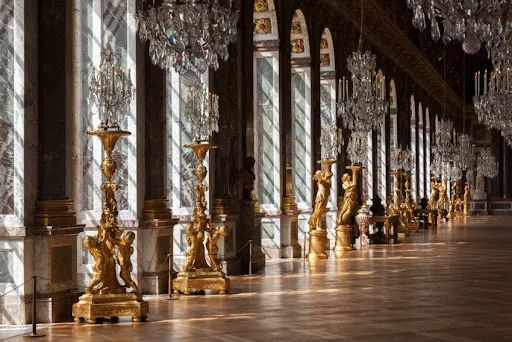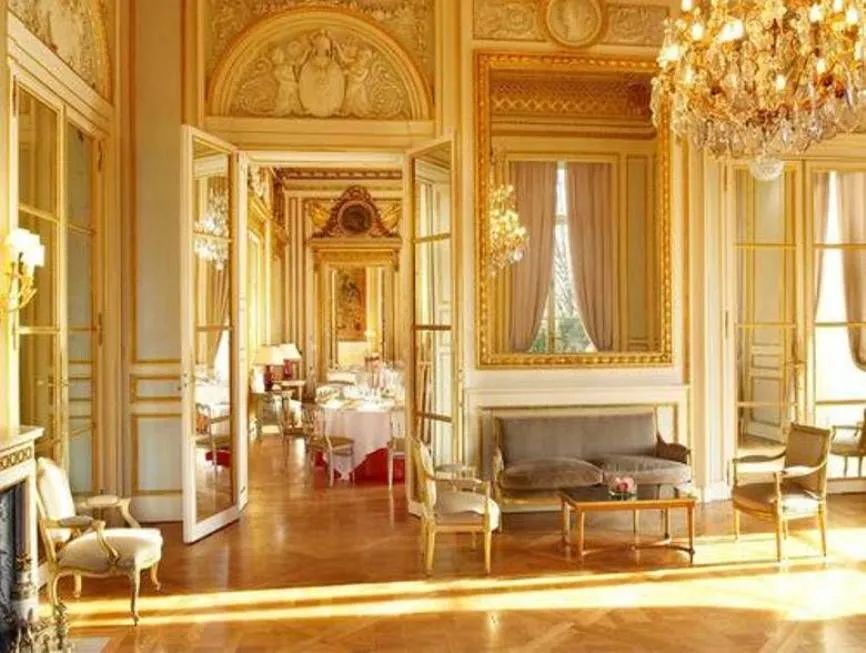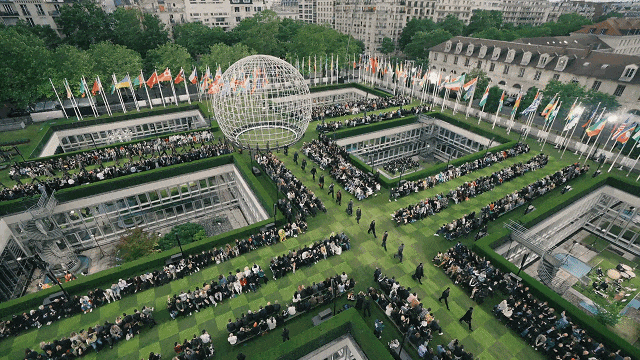
When it comes to luxury goods, France holds an unparalleled advantage and historical significance, firmly maintaining its unshakeable position at the top. Among the world’s top 10 highest-earning and most influential luxury brands, regardless of which ranking list you consult, French brands consistently occupy about half the spots. France is undoubtedly synonymous with luxury goods. But why do so many of these brands originate from France?
This is no coincidence. France’s roots in the luxury industry run deep, tracing back to the opulent court of Louis XIV. The emphasis on luxury goods and fashion became an integral part of French culture. France holds a significant market share in the luxury goods sector because, during Louis XIV’s reign, he established numerous rules that made luxury goods an essential aspect of the French way of life.

This historical precedent laid the foundation for French brands to become synonymous with luxury and exclusivity. The lavish lifestyle promoted by the French monarchy established a cultural foundation, solidifying France, particularly Paris, as the ideal birthplace for luxury fashion.

Key Points:
- France has a long history as a powerhouse in luxury fashion culture.
- The French luxury goods industry benefits from government support and a strong historical image.
- Through strategic marketing and brand promotion, iconic French brands have become symbols of the luxury industry.
I. Louis XIV’s Reign Established France as a Luxury Center

During Louis XIV’s reign, France became a powerhouse in luxury goods. Obsessed with opulence, he decreed that the French royal court at Versailles should wear only the finest French clothing, setting the standard for luxury throughout Europe.
Louis XIV ensured that the luxury goods industry received public support and created an environment where craftsmanship flourished. He cultivated an atmosphere where tailors, perfumers, jewelers, and furniture makers were respected, driving them to reach the pinnacle of artistry and refinement.

II. The French Art of Living Became Fashionable
Consequently, Louis XIV also promoted the French art of living. French luxury is often synonymous with fashion houses and haute couture brands that dominate global discourse: think Chanel, Dior, and Louis Vuitton.
However, the French luxury lifestyle extends far beyond Parisian runways, touching every aspect of daily life and forming a complete luxury ecosystem. At its core is the art of living, a cultural concept reflecting a taste for art and the pursuit of an elegant, pleasurable lifestyle.
During his reign, men and women were more inclined to meet in the finest cafes, which were previously not so lavishly decorated. Exquisite food, fashion, and ornate venues became the norm.

In the culinary realm, French cuisine is renowned worldwide, emphasizing quality ingredients, refined flavors, and elegant presentation. French wines, particularly from famous regions like Bordeaux and Champagne, are also essential to the luxurious lifestyle. Appreciation for the culinary arts is viewed as an integral part of the art of living, representing sophistication and social enjoyment.
Interior design is another area deeply influenced by France. French furniture and home decor embody traditions of craftsmanship and elegance. The ornate designs of the Baroque and Rococo periods are its hallmarks, continuing to inspire modern French luxury interior design.

The global marketing of the French art of living capitalizes on these cultural associations, promoting not just products but a desirable lifestyle. This concept interweaves the tangible with the experiential, selling a dream that’s as much about a meticulously crafted accessory as it is about the intangible pleasure of a perfectly balanced wine. Thus, French luxury is not just an industry but a narrative that continues to capture global imagination.
III. French Government Support for the Luxury Fashion Industry

The French government has long recognized the value of the luxury fashion industry, considering it an integral part of the nation’s cultural heritage and economic strength. Government subsidies have significantly contributed to creating an environment where luxury brands can thrive. Initiatives such as funding and legislation reflect a commitment to sustaining this industry.
Government policies have played a crucial role in nurturing luxury brands. They also place great importance on protecting the luxury goods industry and combating counterfeiting, which has a significant impact on the French economy. If caught entering France with counterfeit luxury bags, several scenarios may unfold depending on the specific circumstances.
The counterfeit goods may be confiscated, and fines could be as high as twice the retail price of the authentic item. Can you imagine being fined up to $60,000 or more for carrying a fake Hermès bag?
IV. France as the Birthplace of Haute Couture

Haute couture was born in mid-19th century Paris. Charles Frederick Worth is known as the “Father of Haute Couture.” Worth’s approach was to create unique, handcrafted pieces that had a profound impact on the fashion industry.
In the 19th and early 20th centuries, several iconic fashion houses emerged, solidifying France’s position as the center of the luxury fashion world:
- Louis Vuitton, initially known for travel trunks and luggage, later expanded its product range to offer a wider array of luxury goods.
- Chanel, founded by Gabrielle “Coco” Chanel, revolutionized women’s fashion with timeless designs and an emphasis on combining comfort with elegance.
- In 1947, Christian Dior’s “New Look” took the world by storm, redefining post-war women’s fashion.
- Yves Saint Laurent later continued the tradition of French luxury, breaking fashion boundaries with innovative designs that captured the essence of modernity and empowerment.

These French ateliers have continued to grow and remain popular to this day because of their attention to detail and use of high-quality materials. French goods are renowned for their craftsmanship, often handmade by skilled artisans using techniques passed down through generations. This focus on quality is not just a tradition but a rigorous standard that keeps the reputation of French luxury brands at its peak.
V. Influential Designers and Fashion Icons
The success of French luxury brands is also closely tied to the contributions of influential designers and fashion icons. For example, Jean Paul Gaultier brought innovative designs that left an indelible mark on the industry.

Meanwhile, legendary figures like Audrey Hepburn, wearing French brand clothing in various films, helped elevate the status of designer wear, bridging the gap between cinematic glamour and haute couture.
Designers and brands often become synonymous, with their personalities and creative visions driving brand narratives and attracting consumers across generations. Hermès, while an independent entity compared to conglomerates like LVMH and Kering, thrives on its reputation for uniqueness and high-end craftsmanship, solidifying its position among major players.
VI. The Art of Exclusivity and Waiting Lists
French luxury brands often create an aura of exclusivity by strictly controlling supply and fostering high demand. For instance, a brand might release a limited number of products or create waiting lists for their most coveted items. This scarcity sparks desire and reinforces the brand’s elite status. Customers on waiting lists feel a sense of anticipation and privilege, enhancing the perceived value of the brand.

LVMH, the French luxury goods conglomerate, frequently employs these strategies. They also support emerging talent through the LVMH Prize, which not only fosters innovation but maintains exclusivity through collaborations with high-caliber up-and-coming designers.
VII. Global Influence and Market Adaptation
In expanding their global influence, French luxury brands adjust their marketing strategies to cater to preferences in different markets. For example, when entering the crucial Chinese luxury market, brands might incorporate traditional Chinese elements into their advertising campaigns or adapt product lines to suit local consumer tastes, all while maintaining their core image.

These brands advertise heavily and strategically, using high-profile campaigns and celebrity endorsements to convey their message. They project an image that customers aspire to—not just a product, but a lifestyle.
The French Luxury Phenomenon: Why Does France Dominate the Global Luxury Market?
Tweet





